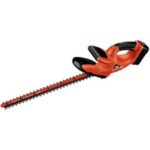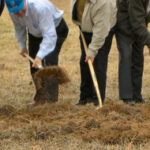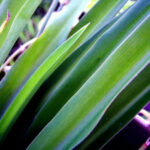Having healthy shrubs begins before you even place the plant in the ground. How they are planted can ensure their survival or their demise.
Here are ten tips to planting and having healthy shrubs, whether they are in place as a garden accent or a hedge. Knowing what to do before the first plant is purchased can save your garden, plants and money.
Number one: Soil
Obtain a soil test kit from any local garden center and test your soil. There are also kits which allow you to send samples to an independent laboratory. When the tests come back, pay attention to the recommendations for soil amendments. Not all soil is the same.
Depending on your soil type, sand, clay, topsoil, etc. study which plants do best in your type of soil. A plant that likes sandy soils will die in heavy clay soil. Adding compost to any soil is a welcome improvement.
Don’t forget to record the PH of your soil. Many plants look fantastic in the garden center, but die in gardens because of incorrect PH. You can choose to amend your garden site to match the PH of the plant, but once the roots go beyond the planting site all bets are off. It’s better to select plants for the PH of the existing soil.
Number two: Soil Drainage
Dig a 1 foot deep hole in your soil in the place where you want to plant your shrub. Leave overnight to drain. The next day, perform the test. Fill the hole again with water and record the time it takes for all the water to drain. This is called the percolation test.It may seem like this is a waste of time, but it isn’t.
If the water drains at a rate of less than ½” an hour, the soil is suited to wet plants. This means that it is best for plants that like wet soil, such as those found by lakes, rivers, etc. A plant that needs well drained soil will drown.
If the drainage rate is ½” to 1 inch an hour, the soil is considered moderate. This is suited to most plants and wet species. Check with your nursery.
If the water takes less than an hour to drain an inch, this is the perfect drainage for most plants. Wet plants won’t do well in this soil, though. The water will drain away and the roots will dry out.
If the water drains out of the hole completely in less than half an hour, you have sand. Only those shrubs that like sandy soils should be planted. There are many flowering and non-flowering species to choose from.
Number three: Know Your Zone
Gardeners who don’t take the time to know their growing zone make plant producers rich. A plant that thrives in Montana would die in Arizona. Plants that do well in South Texas wouldn’t stand a chance in New York. I would truly love to have a cherry tree in Bexar County, Texas, but the tree is a cool weather plant, and, well, we don’t have a lot of cool weather.
The USDA has an online map available for free; seed packets, almanacs and garden centers have experts that can tell you what zone you’re in. Planting shrubs chosen by zone is a huge step in their success.
If you live in an area where two zones cross, choose plants that thrive through the hotter zone. For example, Bexar County Texas is in both zones 8 and 9. Some zone 8 plants will live, others won’t. Plants that survive in zone 9 do well. Remember the cherry tree I wanted? It does well in zone 8, but our zone 9 summer heat killed it.
Number four: Check Your Spacing
Planting bushes for a hedge doesn’t have to end in headache or heartache. When purchasing plants, ask questions: how tall will it be, how wide will it be, and how far apart should they be planted?
Most hedges planted by beginning gardeners die because they are planted too close together. The plants grow and their branches compete for sun while the roots choke each other to death. Proper spacing for the type of plant would prevent this.
If the desired shrub or bush is a garden accent, ask how far away other plants should be. Overcrowding will kill the shrub and the surrounding plants.
Number five: Dig the Right Size Hole
Once the shrub has been chosen and the site selected, dig a hole twice as wide as the root ball. If the roots follow the inside of the container in a circle, cut them so they grow out. If this isn’t done, the roots will continue to grow in a circle and will strangle the plant.
Don’t throw out the soil removed from the hole. Amend this soil, add a slow release fertilizer if desired and use it for backfill.
If you have good, well drained soil, plant the root ball even with the surrounding soil. If you have slow draining clay, plant the root ball 1 inch above the soil for every 8 inches of root ball depth.
Water well and watch for air bubbles. If the backfill sinks, place more soil around the root ball. Do not pack it solid. You want the soil to contact the roots, but not compacted to the point that the roots aren’t going to dig.
Number six: Plant in a Container
If your soil just isn’t right for the shrub you want, consider growing it in a container. The container can be above or sunken into the soil. These plants are easier to maintain, fertilize, weed, etc.
Make sure the chosen shrub can survive in a container. Some plants have massive root systems that make container growing impossible. Make sure to replace the soil in the container once every three years and cut back the roots by about a 1/3 so the plant will continue to thrive.
Number seven: Mulch and Water
Mulch around the base of the plant to retain water during the heat of the day. Wood bark, composted sawdust, nut shells or other mulch helps to prevent evaporation which can save on the water bill.
Be sure to use the right mulch, though. Plants that need alkaline soil won’t appreciate a mulch of pine needles, which are acidic. Raw sawdust leeches out minerals from the soil away from the plant.
Be aware of how much water your shrub needs. Too much will drown it; too little and the plant will die of thirst. During a heat wave, the plant will need more, and container plants need more water than those planted in the ground.
Number eight: Use Chemicals Sparingly
Weed killer should only be used in areas where hand tools or hand pulling isn’t practical. If you have to spray for weeds, make sure none lands on your shrubs. Most herbicides aren’t picky about what they kill. Hold up a piece of cardboard between the weed and your shrub and use the smallest amount of spray to do the job.
Before deciding to use an insecticide make sure the bugs being killed are actually doing damage to your shrub. If you notice aphids, but see lots of ladybugs too, don’t be so hasty to spray. The spray will kill the good bugs as well as the harmful ones. Only use the smallest amount needed to do the job. If mixing concentrated insecticide, follow the directions exactly. Using too much can harm or kill the shrub.
Fertilize only at the proper time and the amount needed for each shrub. Too much fertilizer will burn the roots of young plants, and can kill older ones as well. If you have three different shrubs needing three different fertilizers, use three different fertilizers. One size doesn’t fit all.
Number nine: Judicious Pruning
This is essential for the success of your shrubs. Prune too little and their overgrown branches will compete for sunshine, too much and the plant could die. For each shrub, know how much and which branches or shoots to cut.
Use only sharp tools and make sure the edges have no nicks or breaks. If the edge is nicked, the cut will be torn and could encourage bug attacks or disease.
Prune only at the right time of year for the plant. While some shrubs should be pruned in winter while they’re dormant, others should be pruned after spring bloom.
Number ten: Protect Your Shrubs
After all the work you’ve put in to research, digging holes for and planting shrubs, it’s just not fair that they die from abuse. Weed eaters are notorious for cutting the bark around shrubs and killing them. Only use a weed eater or lawn mower no closer than 6 inches from the trunk. Any weed or grass closer than that should be dealt with by hand.
Animals can be just as destructive. Deer love to munch just about any shrub you’ve planted while dogs and cats dig near the roots. Dog’s urine also can burn the shrubs.
There are wraps available for protecting the trunks of shrubs, and guards can be purchased to keep the lawn mower and weed eater from doing harm. Special netting, fencing and sprays are available to keep animals away from your prize.
It may seem like a lot of work to do before planting any shrub, but it’s worth it in the end. Doing your homework first will allow you to choose and purchase the right shrub and save money in the end by not replacing plant after plant.
Have the garden you want the first time you plant.






